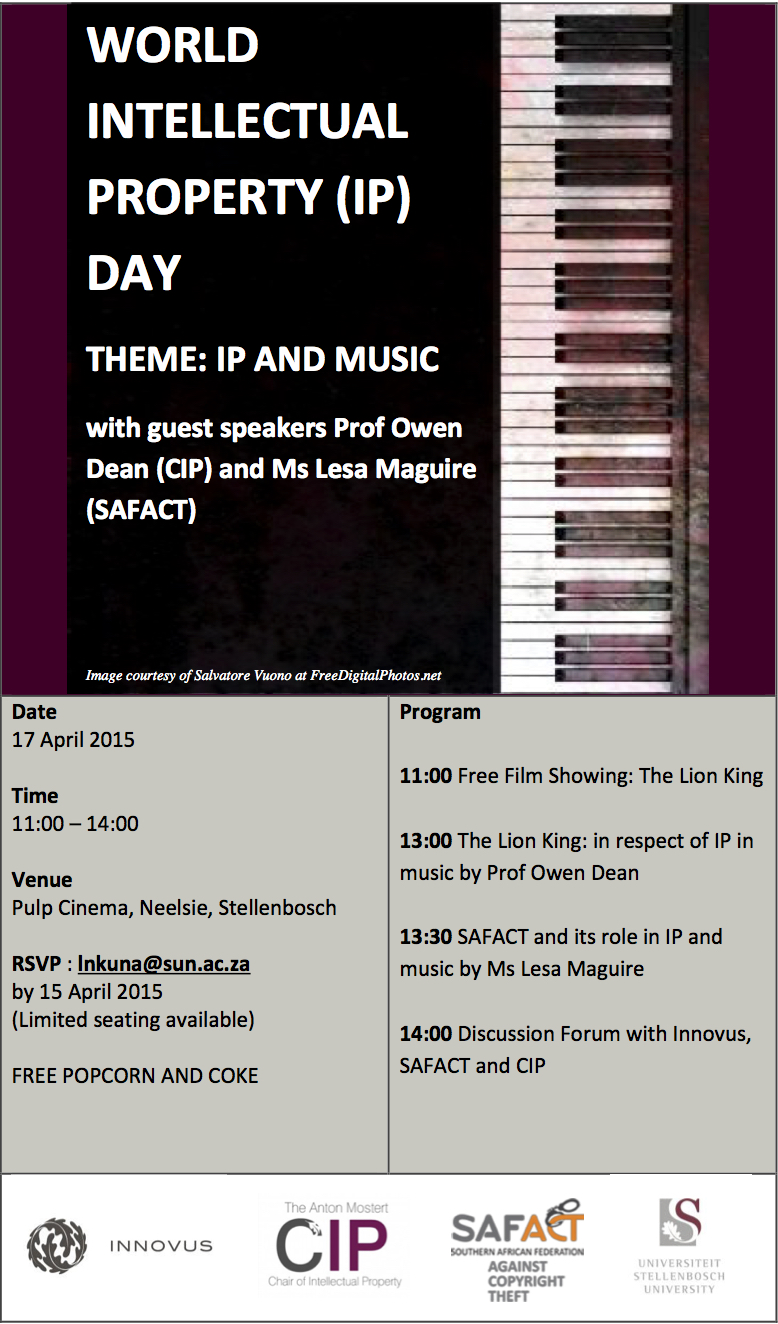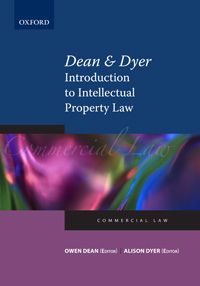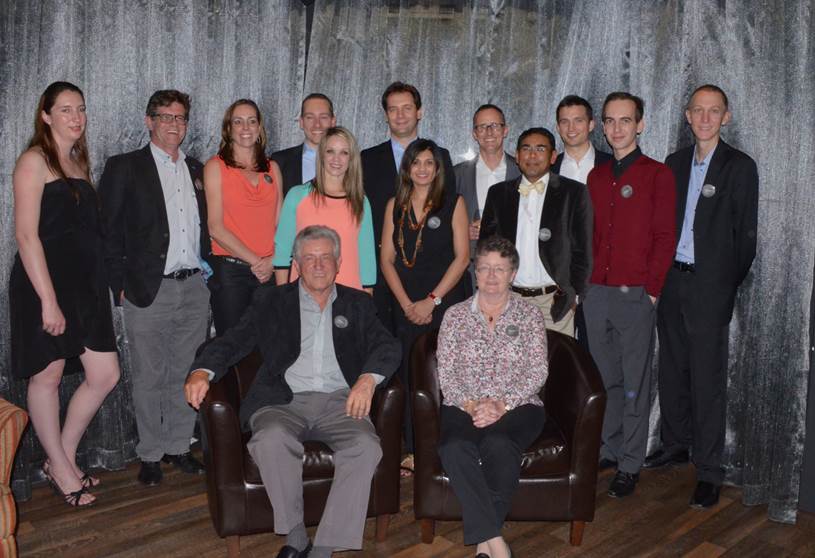Section 2 of the Constitution of the Republic of South Africa, 1996, provides that it is the supreme law of the country and that any law inconsistent with it is invalid. This provision creates the necessity to interpret the Copyright Act in a manner consistent with the Constitution at the risk of the Act, or particular provisions of it, being declared to be invalid. On the other hand, section 36 provides that the rights in the Bill of Rights (Chapter 2 of the Constitution, comprising sections 7-38, which detail the fundamental human rights) may be limited in terms of law of general application to the extent that the limitation is reasonable and justifiable in an open and democratic society based on human dignity, equality and freedom, taking into account all relevant factors. Specific factors to be taken into account are enunciated and these include the nature of the right, the importance of the limitation, its nature and extent, the relation between the limitation and its purpose, and any possible less restrictive means of achieving that purpose.
It is submitted that the fact that intellectual property is protected on a world-wide basis and had been comprehensively protected in South Africa for around a century prior to the adoption of the Constitution, and that South Africa is a member of, and is bound by, certain international conventions dealing with intellectual property which oblige it to grant protection comprising certain minimum standards, are relevant factors as contemplated in Section 36. This provision is supplemented by section 39(1) in terms of which, when interpreting the Bill of Rights, a court must consider international law and may consider foreign law.
In the result it is necessary that a balance must be achieved between the tenets of intellectual property law and the Bill of Rights which allows intellectual property law to be interpreted in accordance with the accepted principles of this branch of the law, as applied internationally, in a manner consistent with the Bill of Rights.
IP AS A CONSTITUTIONAL RIGHT
The fundamental human rights comprised in the Bill of Rights include the following rights which may be considered to play some role in applying intellectual property law: privacy (section 14); freedom of expression (section 16); property (section 25); and access to information (section 33)
The question arises whether intellectual property, and in particular copyright, enjoys protection under the South African Constitution as a fundamental human right or otherwise. Is intellectual property, or the right to hold it, a fundamental human right? If not, is intellectual property protected in some other way in the Bill of Rights. How does the Bill of Rights impact on the Copyright Act?
Article 27(2) of the Universal Declaration of Human Rights states: ‘Everyone has a right to the protection of the moral and material interest resulting from any scientific, literary or artistic production of which he is the author.’ The Universal Declaration was a resolution of the General Assembly of the United Nations passed in 1948 and had no binding force on member countries in the sense that it did not create enforceable obligations on adherence to the declaration. It, however, gave rise to an international covenant, namely the International Covenant on Economic, Social and Cultural Rights, 1966, which is an international treaty binding on its members. The aforementioned article of the Universal Declaration is echoed in Article 15 of the International Covenant. Given the wide acceptance of the Universal Declaration and the International Covenant (together in addition with the International Covenant on Civil and Political Rights, 1966) as being the embodiment of fundamental human rights it can be argued that the right to hold intellectual property rights, and more particularly copyright, is a universally accepted fundamental right. While South Africa did not support the Universal Declaration, it is a party to the International Covenant.
When called upon to adjudicate upon the validity of the South African Constitution as part of the process of its adoption, and in particular upon the question of whether it provided for all universally acceptable fundamental rights, freedoms and civil liberties in the Bill of Rights (as it was mandated to do), the Constitutional Court – in the Certification case – held that the right to hold intellectual property was not universally accepted as a fundamental right and therefore did not require to be recognised in the Bill of Rights.[1] The soundness of this decision is open to serious question.[2] The court sought to justify its decision by explaining that intellectual property is a form of “property” which is covered by section 25 of the Constitution and it was therefore not necessary for it to be dealt with separately in the Bill of Rights.
IP AS PROPERTY UNDER THE CONSTITUTION
For the present purposes, the relevant part of section 25 of the Constitution reads as follows;
“(1) No one may be deprived of property except in terms of a law of general application, and no law may permit arbitrary deprivation of property.
(2) Property may be expropriated in terms of law of general application
(a) for a public purpose or in the public interest;and
(b) subject to compensation, the amount of which and the time and manner
of payment of which have either been agreed to by those affected or
decided or approved by the court.
(3) ………
(4) For the purposes of this section-
(a) the public interest includes the nation’s commitment to land reform, and
to reforms to bring about equitable access to all South Africa’s natural
resources; and
(b) property is not limited to land”
It is apparent from a reading of the section that its primary focus is on immovable property (land) and more particularly the deprivation or expropriation of such property. The inclusion of sub-section (4)(b) appears to have been something of an afterthought as a catchall to include property in general within its ambit. No doubt the Constitutional Court had this provision in mind when it said that section 25 covered intellectual property. On this premise, the protection granted to intellectual property by the section is of a very limited ambit and is confined essentially to preventing the taking away of existing property. It places no obligation on the state to continue facilitating the creation of intellectual property in the future. The scope of the protection, such as it is, is rather unsatisfactory. Be that as it may, a basis was created for the argument to be advanced that intellectual property enjoys (a measure) of protection in the Bill of Rights and is constitutionally enshrined
THE LAUGH IT OFF CASE
In Laugh it Off Promotions CC v The South African Breweries International (Finance) BV t/a Sabmark International (Freedom of Expression Institute as Amicus Curiae) [3] the Constitutional Court held that the right to freedom of expression (enshrined in section 16(1) of the Constitution) and intellectual property rights (more especially trade mark rights, which were the subject matter of the case) enjoyed equal status under the Constitution. It is now generally recognised (against the background of the view expressed by the court in the Certification case) that intellectual property falls within the concept of “property” as used in section 25 of the Constitution. In support of this acceptance it must be pointed out that the case in the Constitutional Court was an appeal from a decision of the Supreme Court of Appeal and that that court had held that
“[t]rade marks are property, albeit intangible or incorporeal. The fact that property is intangible does not make it of a lower order. Our law has always recognised incorporeals as a class of things in spite of theoretical objections thereto,,,,,” [4]
The Constitutional Court did not challenge this dictum and must be taken to have approved it. Judicial recognition was thus extended to the proposition that trade marks and other intellectual property rights, including copyright, constitute property for the purposes of section 25 of the Constitution. This principle has given rise to a claim that the statutory prohibition of the use of a registered trade mark would amount to depriving the proprietor of that registered trade mark of an item of property as contemplated in section 25 of the Constitution and that the legislation in question would be invalid. [5]
THE GIDANI CASE
The contention that the principles regarding the constitutional status of trade marks as property under the Constitution espoused by the Constitutional Court in the Laugh if Off case apply equally to copyright has recently been endorsed by the High Court in National Soccer League v Gidani (Pty) Ltd. [6]
In the Gidani case it was argued by the defendant that its unauthorised use of the copyright works that were the subject matter of the case (soccer fixture lists) was excused by reliance on the right of “freedom to receive or impart information or ideas” provided for in section 16(1)(b) of the Bill of Rights. The court followed the approach of both the Supreme Court of Appeal and the Constitutional Court in the Laugh it Off case that the relevant provisions of the Copyright Act must be construed in the light of the Constitution and in a manner that does not unduly trample on the defendant’s right of freedom of expression; and that its right of freedom of expression must be weighed up against the copyright owner’s right to intellectual property. The Copyright Act must be interpreted in such a way that it is least destructive of free-expression rights. The Constitutional Court, in the Laugh it Off case, expressed this principle by saying that the Trade Marks Act should be viewed and understood “through the prism of the Constitution”. [7]
In dismissing the defendant’s constitutional defence, the court in the Gidani case found that
“…..the defendant’s conduct is not a form of freedom of speech or expression identified for protection by the Constitution. On the contrary all indications or pointers point or lead to the appropriation on an intellectual property asset belonging to the plaintiff, not for purposes of parody or lampooning or for other social purposes, but instead for no other purpose other than to generate commercial gain for itself. Section 16(1)(a) or (b) of the Constitution on any construction does not permit commercial exploitation of another’s intellectual property under the guise of supposedly informing the public.” [8]
CONSTITUTIONAL DEFENCE
In the Laugh it Off case the Supreme Court of Appeal approached the Appellant’s freedom of expression defence on the following basis: it made a prima facie finding of trade mark infringement on standard trade mark principles. Having done so, it then examined whether the appellant’s constitutional right of freedom of expression provided a defence. It held that such a defence did not avail the appellant and held that trade mark infringement had taken place. The Constitutional Court criticised this approach and said that the right of freedom of speech was not a defence which excused infringement but was rather a consideration that should be taken into account when determining whether infringement had occurred at all. In adopting this approach it interpreted section 34(1)(c) of the Trade Marks Act in a Constitution friendly manner (through the prism of the constitution) and reached the conclusion that no infringement had been perpetrated.
It is submitted that this approach was all well and good in the case of trade mark infringement in terms of section 34(1)(c), which requires the court to decide whether conduct was unfair, and, thus, provided an opportunity for equitable considerations to be taken into account and a value judgment to be made. What, however, is the position where the criterion for infringement of a right is a purely logical deduction and does not inherently provide an opportunity for a weighing up of contrary interests (for instance, in the context of trade mark infringement, the unauthorised use of a mark identical to a registered mark in relation to the goods for which that mark is registered)? How should such a provision be interpreted so that it is consistent with the Constitution?
In this instance it seems that the only alternative would be to view a counterbalancing constitutional right as a defence to a prima facie finding of infringement – the very approach which the Constitutional Court condemned. However, in the light of the pronouncement of the Constitutional Court in the Laugh it Off case, it would appear that a copyright infringer can get no solace from the Bill of Rights unless there is the possibility of interpreting the relevant provisions of the Copyright Act pertaining to the claim in a Constitution friendly manner that enables a reliance on a constitutional defence to be advanced. A constitutional defence cannot simply be mounted, as it were, out of the blue if there is no peg in the text of the Copyright Act on which it can be hung.
A defensive argument which is not foreshadowed in the text of the Act cannot be raised. The court cannot, for instance, read into section 12 of the Copyright Act (dealing with exemptions form copyright infringement) a provision to the effect that the defendant is excused from infringement when relying on his constitutional right of freedom of expression, when no such provision exists. The defendant’s only other recourse would be to launch a constitutional challenge to the Copyright Act, or the relevant provisions of it, on the grounds of non-compliance the Constitution.
It is likely that constitutional issues, particularly by way of counter arguments or defences to copyright infringement claims, are going to be increasingly raised in copyright litigation in the future. Jurists, litigants and the court will have to become adept at viewing and interpreting the Copyright Act through the prism of the Constitution.
[1] In re Certification of the Constitution of the RSA 1996 1996 (4) SA 744 (CC) at p 799.
[2] See OH Dean ‘The case for Recognition of Intellectual Property in the Bill of Rights’ 1997 (60) THRHR 105. In Laugh It Off Promotions CC v South African Breweries International (Finance) BV t/a Sabmark International and Freedom of Expression Institute 2006 (1) SA 144 (CC), a case dealing with trade mark infringement by dilution, the Constitutional Court in effect gave equal status to a statutory trade mark right and the right of freedom of expression in terms of the fundamental rights under the Constitution. In this regard see OH Dean ‘Trade Mark Dilution Laughed Off’ 2005 (October) De Rebus 18.
[3] 2006 (1) SA 144 (CC). For a discussion of this case, see OH Dean “Trade Mark Dilution Laughed Off” (2005) October De Rebus 18.
[4] Laugh it Off Promotions CC v The South African Breweries International (Finance) BV t/a Sabmark International (Freedom of Expression Institute as Amicus Curiae) 2005 (2) SA 46(SCA) paras [10]-[11].
[5] See OH Dean “Deprivation of Trade Marks through State Interference in their Usage” South African Intellectual Property Law Journal (2013) 1.
[6] 2014 JDR 0523 (GSJ) para [96].
[7] Laugh it Off Promotions CC v The South African Breweries International (Finance) BV t/a Sabmark International (Freedom of Expression Institute as Amicus Curiae) 2006 (1) SA 144 (CC) para [43].
[8] National Soccer League v Gidani para [108].




